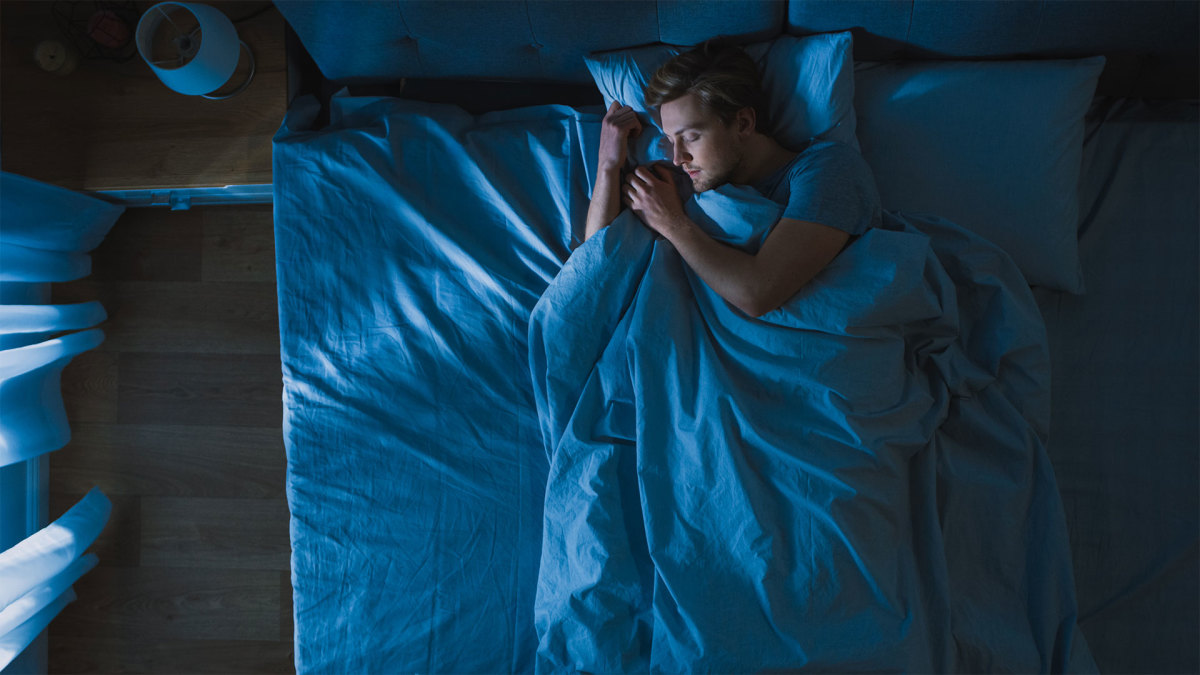TikTok's Viral 'Cognitive Shuffle' Hack Can Help You Fall Asleep in Minutes

If you struggle to fall asleep, you’re in good company. About one in three adults in the U.S. report not getting enough rest or sleep every day, according to the Centers for Disease Control and Prevention (CDC). You’ve probably invested in any number of remedies: weighted blankets, sleep headphones, CBD gummies, and melatonin supplements like Olly Sleep. If racing thoughts still keep you up at night, there’s a new trick that may help: cognitive shuffle.
What Is Cognitive Shuffling?
Cognitive shuffling is a sleep hack invented by Canadian cognitive scientist Luc Beaudoin that may be your ticket to a better night’s sleep.
It’s a way to reorganize or rearrange your thoughts to distract your mind from the line of thinking keeping you awake. Essentially, you scramble your thoughts in a way that doesn’t make sense to your mind so you curb anxious ruminations.
Related: Just One Night of Sleep Deprivation Can Cause Next-Day Anxiety
How to Practice Cognitive Shuffling
Imagine this: You’re lying in bed and can’t fall asleep. You followed all of Dr. Andrew Huberman’s sleep advice. You were exposed to sunlight within 30 to 60 minutes of waking, curbed caffeine consumption eight to 10 hours before bed, and turned off overhead lights in the evening—but you still can’t sleep. Maybe you can’t stop thinking about an important work presentation or maybe things in your personal life are keeping you up.
Here’s how to put cognitive shuffling into practice: As anxious thoughts enter your mind, picture a string of random objects—dog, taco, dumbbell, tree, and so on. For the trick to work, make sure the sequence is actually random (don’t picture your own dog, for example).
If you try visualization but keep getting caught up on the images you’re choosing, you can also practice the method in another way. Start by picking a word, like lamp, then begin picturing as many items that start with the letter “L” as you can—lake, legs, linguine. Once you’ve ruled out any “L” words, work through the rest of the letters in the original word—”A,” “M,” “P.” It’s like a new-age way to count sheep.
Related: A Two-Week Plan for the Best Sleep of Your Life
Does Cognitive Shuffling Work for Everyone?
Like any trick for sleep, it may not work on everyone. Cognitive shuffle was originally designed for individuals who experience racing thoughts as they try to fall asleep. However, it may not work for individuals with more serious sleep disorders or for those who have bad sleep habits.
If you try this method and find it’s not working for you, take a closer look at your lifestyle habits. Are you drinking caffeine late in the afternoon? Are you scrolling on your phone in bed at night? Are you using bright overhead lights in the evening? All of these habits can lead to worse sleep, so before you give cognitive shuffling a go, make sure you’re finding ways to optimize your nighttime routine.

